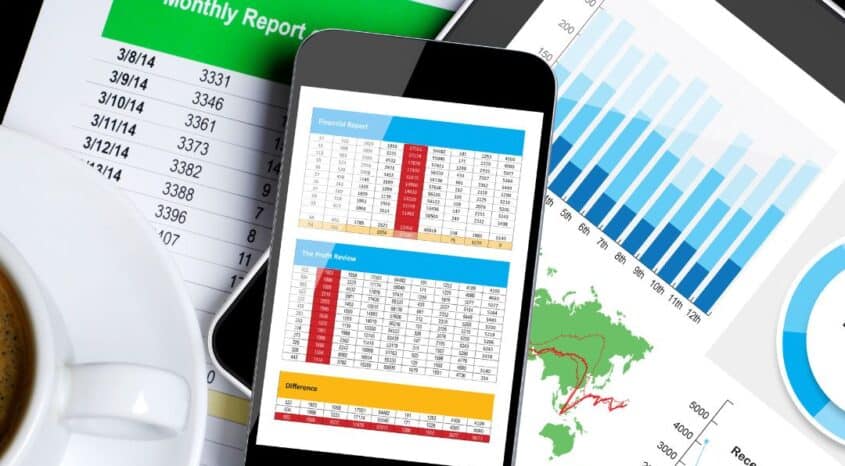For businesses who want to make it in the e-commerce world, service and efficiency is the name of the game.
Manually managing orders across reams of spreadsheets is often how a retail brand starts out doing business; get to a certain point of growth, however, and manually completing endless tasks simply won’t cut it. When orders are flooding in, workflows are becoming more complex and customer expectations are high – this is when e-commerce automation tools come into their own. When smartly used, they can strap a rocket onto a retail brand’s journey towards rapid growth.
What is e-commerce automation?
Put simply, e-commerce automation tools are able to streamline and automate the many systems a retailer uses to operate their business. This can span from marketing processes such as sending out customer emails and targeted ads; to operations, such as picking and packing in the warehouse and dealing with returns.
What are the benefits of automation?
When manual processes are automated, the benefits are huge.
- Save time
When staff aren’t tied up in clunky manual tasks, hundreds of hours can be saved and put towards more creative, growth-focused opportunities.
- Boost Accuracy
There’s usually a boost in accuracy, as human error is unavoidable when a business depends on manual organizing and data handling.
- End-to-end Connectivity
When e-commerce automation tools are integrated into a curated tech stack, the company should receive all data across their business, synced together and updated in real-time.
- Reduce costs
By saving staff time, you’re saving money. At a time when keeping costs low is absolutely vital in retail, automation is the only way to go.
“The way to reduce complexity and offset the cost of inflation is simply to automate as much of the operation as possible,” says Mark Hook, VP Brand Marketing, Brightpearl by Sage.
“Retailers should focus on automating everything from order fulfilment and returns, to inventory management, shipping and accounting. Automation can have a significant impact on overheads. With so many online brands looking to reduce costs at pace, that’s where they should start.”
Overall, the use of a smart collection of integrated automation tools can achieve pure wizardry for your overall customer experience. Your target market will receive the goods they want quickly and easily, and generally receive better service – allowing your brand reputation to soar and business to grow.
Key e-commerce automation tools for online retailers
So what are some of the best e-commerce solutions on the market today for an online retailer looking to reach huge growth goals? We’ve mentioned some of our favorites in different categories below:
Marketing automation
At its core, marketing is all about reaching customers at every point of their online shopping journey, and automation can help you achieve that. The right tools will allow you to target customers at each point of the funnel, contact them at opportune times, and make sure no sales opportunities are missed.
Smart marketing automation apps such as Hubspot or Klaviyo, for instance, allow you to segment your customers and send out personalized communication via email, SMS and in-app notifications so that they have a hyper-customized buying experience. With automatic cart abandonment notifications, birthday discounts and thank you messages, your customers will feel looked after without your team having to lift a finger.
Operational automation
After a customer hits ‘buy’, there are multiple operational processes that take place – all of which need to be smooth, timely and correct in order to keep that customer satisfied and likely to come back again. Automating systems in ordering, inventory, and warehouse tasks (such as barcode scanning, picking and packing and returns) will save you hundreds of hours a month and significantly improve customer experience.
A retail-focused operating system (ROS) like Brightpearl was created for this very reason. Alongside other smart features – like its Plug & Play integrations, which easily integrate with popular e-commerce apps such as Shopify and Amazon – Brightpearl’s Automation Engine is a game-changer in streamlining operational workflows. By setting conditions and actions in ordering, inventory, warehouse, shipping and fulfillment, time-heavy manual tasks are completed automatically, leaving staff free to focus on higher priority situations.
Jorge Henriques, COO of touch bracelet provider Bond Touch, discovered this when he implemented Brightpearl and saved hundreds of hours a month in manual processes:
“We’ve invested heavily in automation, which has allowed us to reduce our operational costs and save time. Our aim was to stop our team doing almost all manual tasks, so by automating tasks like order processing, shipping, and inventory management, we’ve been able to reduce our labor costs. Automation has saved us three full time hires – equating to around 120 hours a week, or 480 hours a month.”
In terms of digital operations in your Shopify platform, Shopify Flow has a similar impact – allowing you to set up triggers, conditions and actions to automate everyday ordering tasks.
Payment processing automation
Getting payments wrong due to human error spells disaster for a company, so the more technological help you can implement, the better.
Automatic payment processing makes the buying experience swift and secure for the customer, and can prove extremely useful when it comes to repeat purchasing, subscription services and fraud detection.
E-commerce payment tools such as Stripe and Recharge are invaluable for this, and come in particularly useful when a company’s products are ordered on a subscription basis. High-growth e-comm companies such as Bower Collective and The Turmeric Co. have both cited the ease of using Recharge to power their subscription sales and being instrumental in helping their companies grow.
Inventory planning automation
How quickly a business grows comes down to how well you respond to increased customer demand. If you’re not keeping your bestsellers in stock, or you have a bunch of inventory in the warehouse that won’t sell, it can be a huge blocker to cash flow and a drain on potential revenue.
Fast-growing online retailers use inventory planning tools such as Inventory Planner – as it provides data-fueled sales forecasting, automatic purchasing recommendations and stockout warnings, well in time for seasonal changes or sudden spikes in demand. With full inventory visibility and accessible data right down to variant level, companies are also able to identify which are their best-sellers and which dud items can be put on sale or discontinued, without spending hours manually poring over spreadsheets.
This was the case for Brian Lance, COO of online apparel brand, Culk – which uses Inventory Planner to lighten the load when it comes to its regular forecasting and purchasing.
“Inventory Planner has made huge changes to our day-to-day. It used to take me around 30 minutes just to mentally psych myself up to begin the process of making purchase orders. Now I don’t procrastinate anymore trying to put off this huge task – I know I can just press a button and leave it alone.”
–Brian Lance, COO of Culk
Customer service tools
No matter how great your operational framework, things can still go wrong and customers will want to get in touch about it. Though it’s always a great idea to have a human customer service team (nothing beats human contact when it comes to retail), the use of automation tools can pick up some of the slack while customers are waiting to be served.
A customer service tool such as Gorgias or Zendesk provides automated customer service round the clock, and can handle simple tasks or customer queries by either offering one of many pre-loaded answers, or referring the customer to the relevant department.
This means helping a broader volume of customers more efficiently, and freeing up staff who, rather than manually answering easy questions, can direct their services to the trickier problems customers are facing.
Shipping tools
With so many channels, delivery options and geographical diversity in warehouses and markets, shipping out to customers can be a nightmare to organize manually. With the right tools, companies can save time by implementing shipping automation conditions – for example, orders can be routed to the nearest warehouse for speedy delivery. Great shipping software will also offer features like automatic tracking notifications, easy label printing and choosing the most economical freight rates.
One of the top shipping automation tools is Shipstation – which easily integrates with numerous e-commerce apps, such as Shopify and Brightpearl, so you can receive full automation and real-time data from your processes, end-to-end.
If you want to experience the wonders of automation for your e-commerce retail business, get in touch with Brightpearl by Sage today.
Brightpearl’s retail-focused operating system includes a powerful Automation Engine that supercharges operations and allows your business to Grow Fearlessly.




